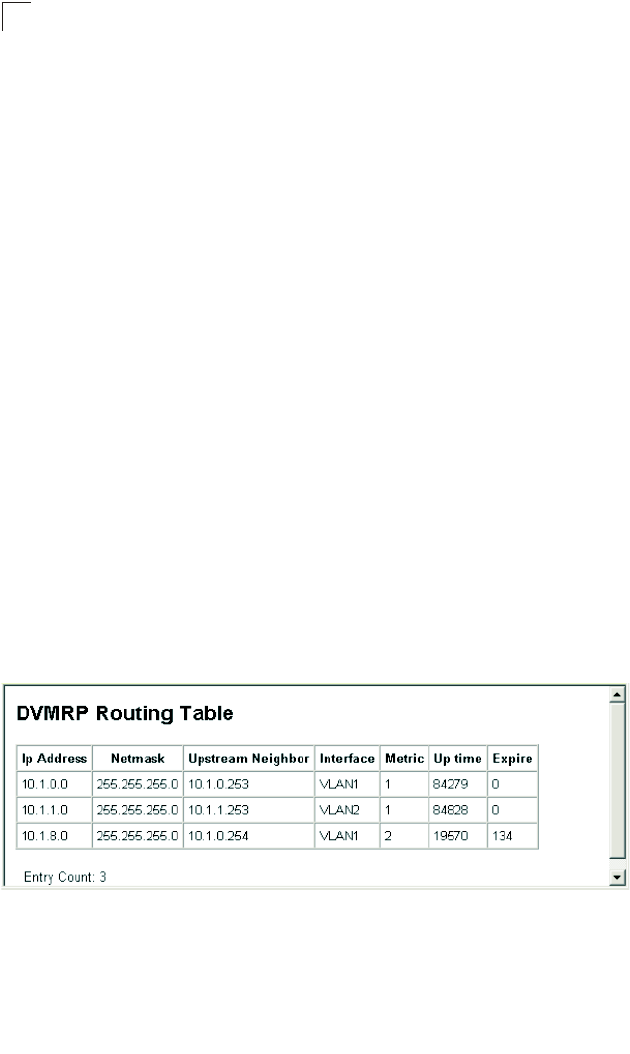
Configuring the Switch
3-270
3
Displaying the Routing Table
The router learns source-routed information from neighboring DVMRP routers and
also advertises learned routes to its neighbors. The router merely records path
information it has learned on its own or from other routers. It does not consider
group membership or prune messages. Information stored in the routing table
includes subnetworks from which IP multicast traffic originates, upstream routers
that have sent multicast traffic in the past or have been learned through routing
messages exchanged with other routers, interfaces connected to an upstream
router, or outgoing interfaces that are connected to multicast hosts.
The DVMRP routing table contains multicast route information learned via DVMRP
route updates, and is used to forward IP multicast traffic. The routes listed in the
table do not reflect actual multicast traffic flows. For this information, you should look
at the IGMP Member Port Table (page 3-176) or the IGMP Group Membership Table
(page 3-180).
Command Attributes
• IP Address – IP subnetwork that contains a multicast source, an upstream router,
or an outgoing interface connected to multicast hosts.
• Netmask – Subnet mask that is used for the source address. This mask identifies
the host address bits used for routing to specific subnets.
• Upstream Neighbor – IP address of the network device immediately upstream for
each multicast group.
• Interface – The IP interface on this router that connects to the upstream neighbor.
• Metric – The metric for this interface used to calculate distance vectors.
• Up time – The time elapsed since this entry was created.
• Expire – The time remaining before this entry will be aged out.
Web – Click Routing Protocol, DVMRP, DVMRP Routing Table.
Figure 3-153 DVMRP Routing Table


















